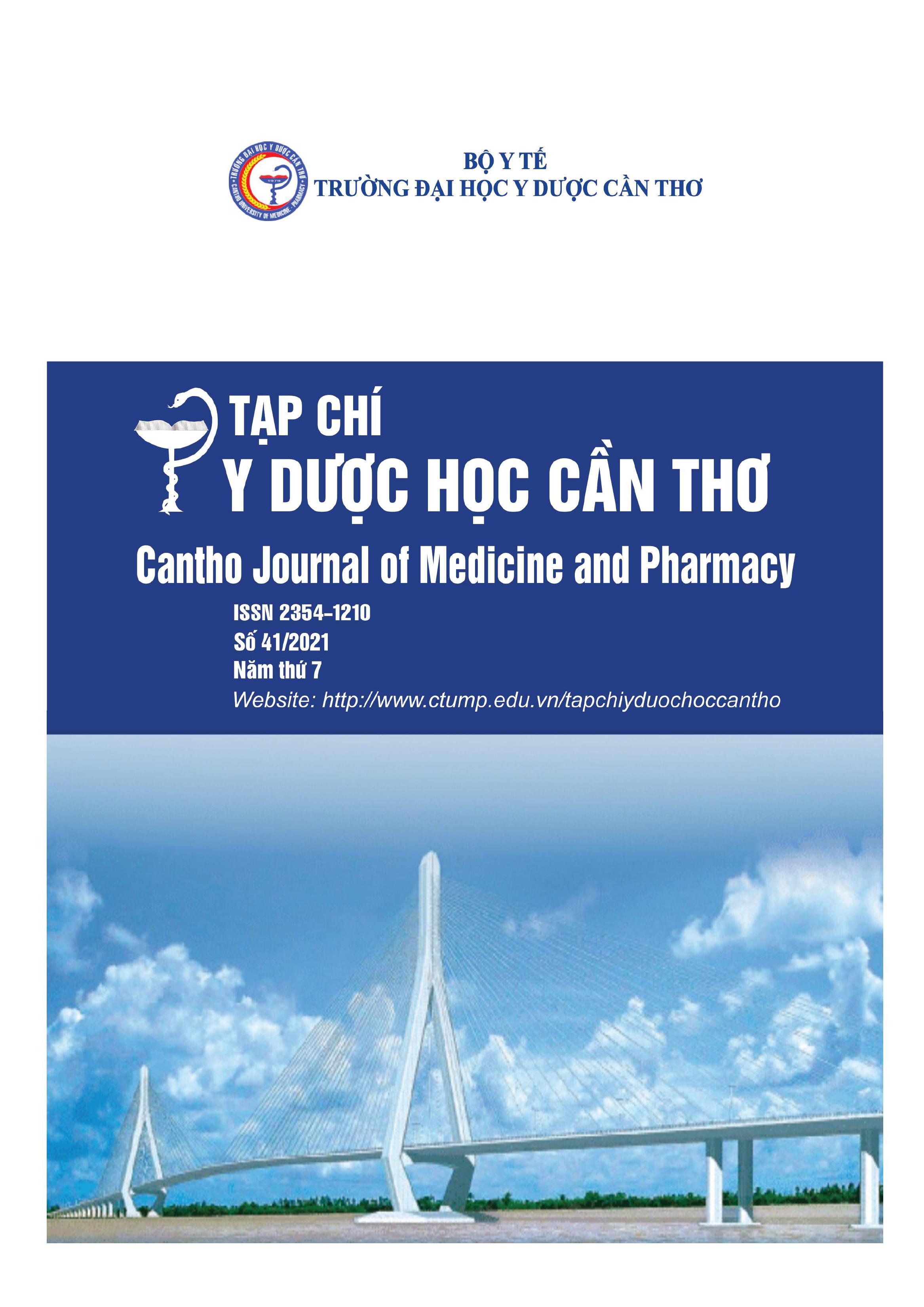OUTCOMES EVALUATION OF LOCKING PLATE OSTEOSYNTHESIS UNDER IMAGING SCANNER INTENSIFIER IN CLOSED INTERTROCHANTERIC FRACTURES AT CAN THO GENERAL HOSPITAL
Main Article Content
Abstract
Background: Intertrochanteric fractures are common in elderly people who almost suffer from osteoporosis. These days, the method of locking plate osteosynthesis under the imaging scanner intensifier of these fractures has proven a lot of outstanding advantages. At Can Tho General Hospital, although surgeons have applied and implemented this method widely, there still has not been studied to evaluate its effectiveness. Objectives: Examining characteristics of clinical, subclinical, and evaluating the outcomes of locking plate osteosynthesis under the imaging scanner intensifier in closed intertrochanteric fractures. Materials and methods: Patients with closed intertrochanteric fractures were classified into two groups A1 and A2 (by AO classification) and treated by locking plate osteosynthesis under the imaging scanner intensifier at Can Tho General Hospital from January 2020 to January 2021. We noted some characteristics of patients, clinical, and x-ray. The outcomes include fixation results, bone healing, and rehabilitation. Results: the average age was 66.77 ± 12.39. The A2 type by AO was noted the most. The neck-shaft angle was restored to normal in 76.67%. The average bone healing time was 12.73 ± 2.23 weeks. Evaluation of Harris score shows 10% of excellent, 43.33% of good, 40% of fair, and 6.67% of poor. Conclusion: Locking plate osteosynthesis under the imaging scanner intensifier in closed intertrochanteric fractures gives very satisfactory results after surgery. It has a high rate of bone healing and good rehabilitation. Therefore, patients can take back their movement early.
Article Details
Keywords
Intertrochanteric fractures, locking plate, imaging scanner intensifier
References
2. Nguyễn Phương Nam (2019), Đánh giá kết quả điều trị gãy liên mấu chuyển xương đùi bằng phẫu thuật kết hợp xương nẹp DHS tại Bệnh viện Bà Rịa, Tạp chí Thông tin Khoa học Công nghệ Bà Rịa Vũng Tàu,114(3), tr.6-9.
3. Nguyễn Văn Tiến Lưu (2014), Đánh giá kết quả điều trị phẫu thuật gãy kín liên mấu chuyên xương đùi bằng nẹp vít khóa, Đại học Y khoa Phạm Ngọc Thạch, Đại học Y khoa Phạm Ngọc Thạch.
4. Agrawal P., et al. (2017), Dynamic hip screw versus proximal femur locking compression plate in intertrochanteric femur fractures (AO 31A1 and 31A2): A prospective randomized study, J Nat Sci Biol Med, 8(1), pp.87-93.
5. Cristina Carvajal-Pedrosa, Rafael C. Gómez-Sánchez, and Pedro Hernández-Cortés (2016), Comparison of Outcomes of Intertrochanteric Fracture Fixation Using Percutaneous Compression Plate Between Stable and Unstable Fractures in the Elderly, J Orthop Trauma, 30(6), pp.e201-e206.
6. Klestil, T., et al. (2018), Impact of timing of surgery in elderly hip fracture patients: a systematic review and meta-analysis, Sci Rep, 8(1), p.13933.
7. Leif Mattisson (2018), Epidemiology, treatment and mortality of trochanteric and subtrochanteric hip fractures: data from the Swedish fracture register, BMC Musculoskeletal Disorders, 19(369).
8. Michael, D., et al. (2016), Expandable proximal femoral nail versus gamma proximal femoral nail for the treatment of AO/OTA 31A1-3 fractures, Injury, 47(2), pp.419-23.
9. Zang, W., Liu, P. F., and Han, X. F. (2018), A comparative study of proximal femoral locking compress plate, proximal femoral nail antirotation and dynamic hip screw in intertrochanteric fractures, Eur Rev Med Pharmacol Sci, 22(1 Suppl), pp.119-123.
10. Zhang, H., et al. (2017), INTERTAN nail versus proximal femoral nail antirotation-Asia for intertrochanteric femur fractures in elderly patients with primary osteoporosis, J Int Med Res, 45(4), pp.1297-1309.


